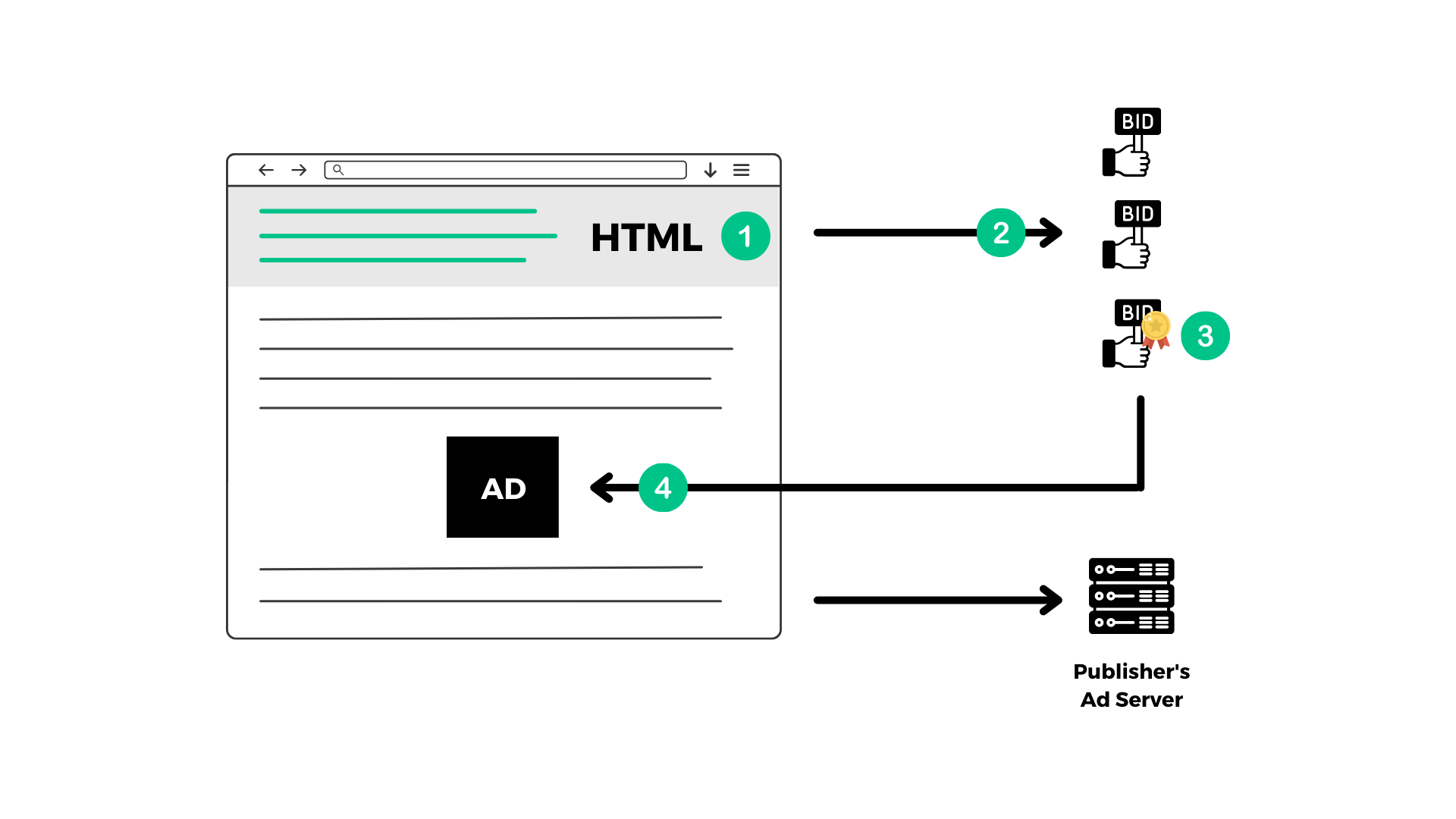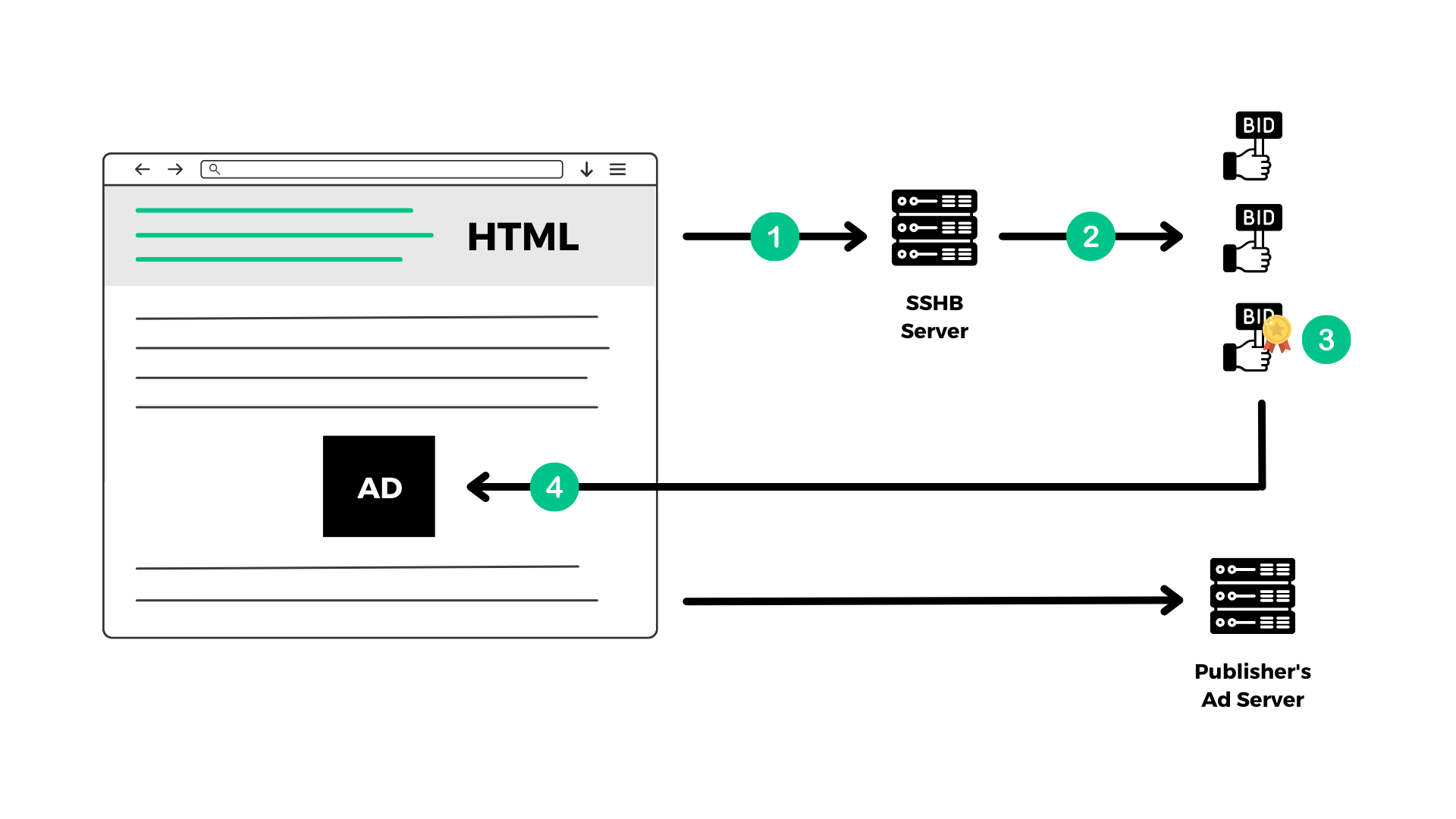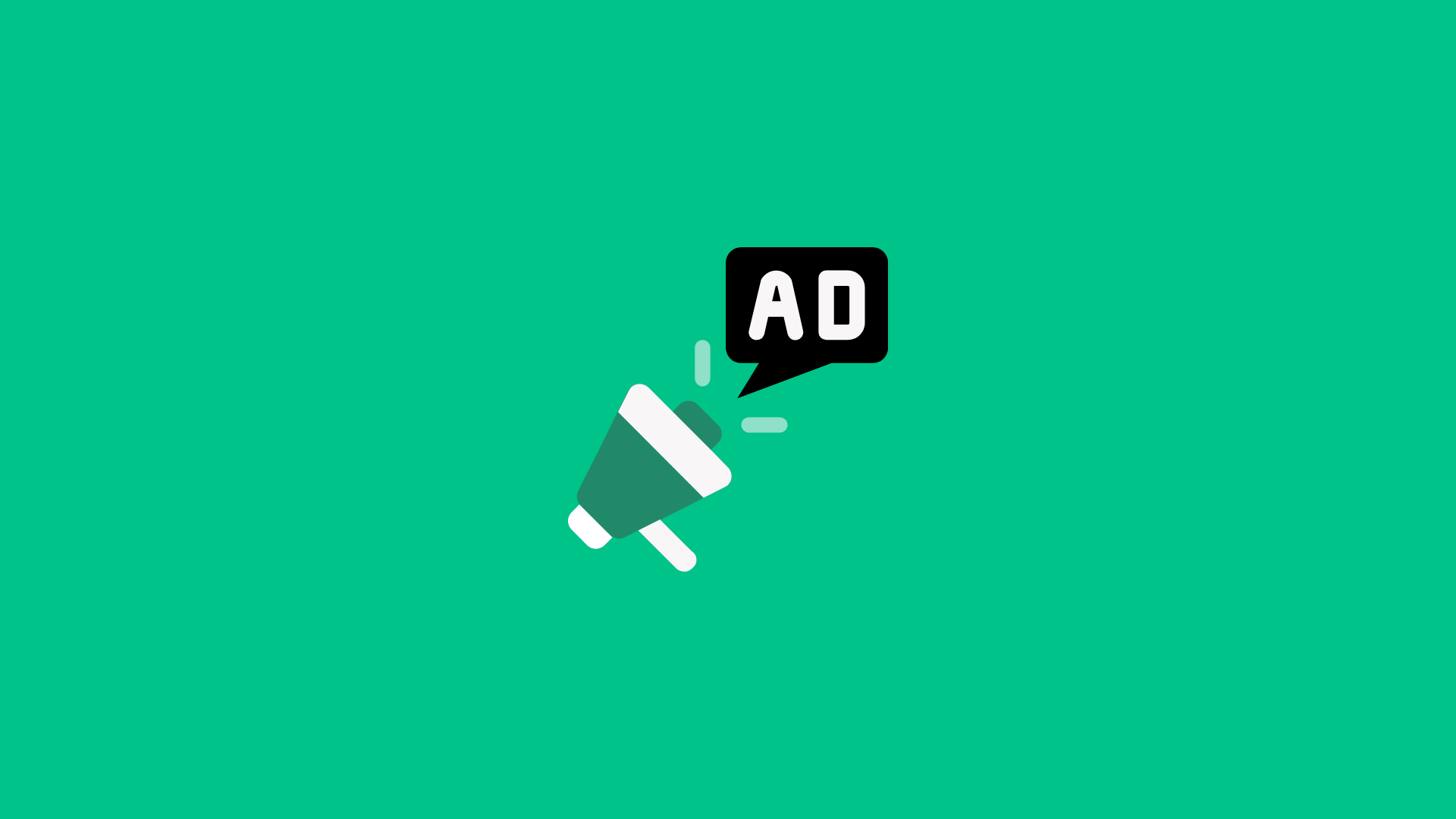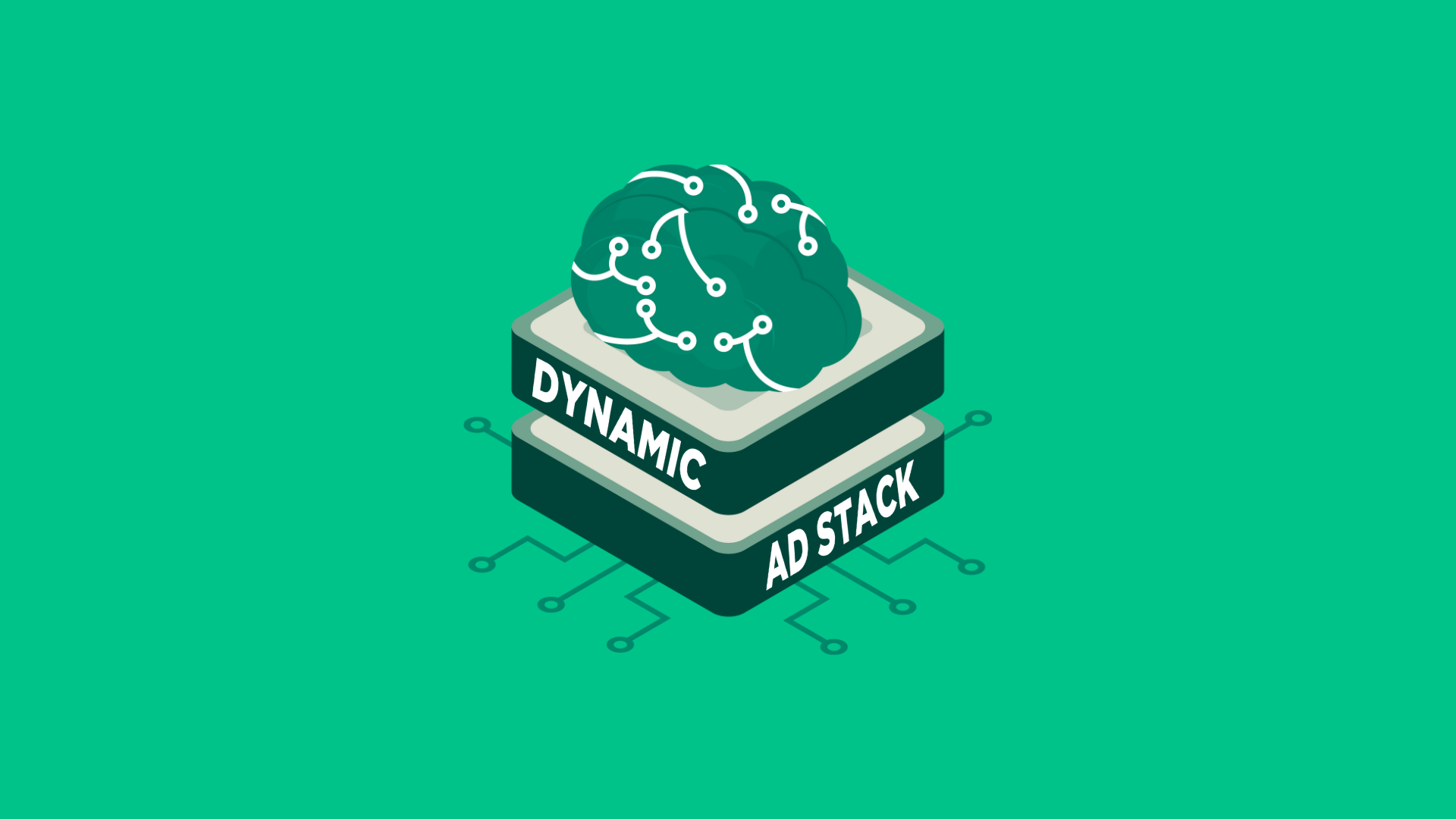In the world of programmatic advertising, header bidding has emerged as a powerful tool for publishers looking to maximize their revenue and gain greater control over their ad inventory. By creating a more competitive environment, header bidding allows publishers to achieve higher CPMs (cost per thousand impressions) for their ad space while providing advertisers with more significant access to high-quality inventory. With the rise of programmatic advertising and the increasing importance of data-driven insights, header bidding has become an essential part of the digital advertising ecosystem.
In this article, we will explore header bidding, how it works, and the benefits and limitations of this technique. We will also take a closer look at server-side header bidding (SSHB), a variation of header bidding that is gaining popularity in the industry.
What is header bidding?
Header bidding is a programmatic advertising technique that allows publishers to offer their ad inventory to multiple ad exchanges simultaneously before making ad calls to their ad server. In traditional ad serving, publishers prioritize ad networks or exchanges and make calls to them one at a time, often resulting in lower bids and reduced revenue. With header bidding, publishers can invite multiple demand partners to bid on ad inventory simultaneously, resulting in increased competition and potentially higher ad revenue. This technique is called “header” bidding because the code is placed in the head of a web page’s HTML code.
Header bidding replaced waterfall bidding because it is a more efficient and effective method of programmatic advertising. In waterfall bidding, publishers prioritize ad networks or exchanges and make ad calls to them one at a time, in sequential order. However, this can result in lower bids and reduced revenue for publishers as the system is based on the estimated value of the demand sources rather than the bids, so the one with the highest bid may be behind others with a higher estimated value. For example, in a given auction, if the third-highest estimated value demand partner has the highest bid, the first two would need to go unfilled for the publisher to access that highest bid.
Benefits of Header Bidding
The main benefits of header bidding include the following:
- Increased revenue: Header bidding helps publishers achieve higher revenue by creating a competitive environment for their ad inventory. By enabling multiple demand sources to bid on the same inventory simultaneously, header bidding ensures that the highest-paying ad is selected for display.
- Improved fill rates: Header bidding promotes adding new demand sources and allowing multiple demand sources to compete for the same inventory. This means that publishers are more likely to fill their inventory with relevant ads, leading to higher overall fill rates.
- Greater control: With header bidding, publishers have more control over their ad inventory and can decide which demand sources to work with. This helps them optimize their revenue and ensure they work with the most effective partners.
- Reduced delay: Unlike traditional waterfall ad buying, header bidding significantly reduces delays between an ad request and the ad being served. This improves the user experience, reduces page load times, and helps publishers avoid losing visitors due to slow loading times.
- Increased transparency: Header bidding provides greater transparency for publishers and demand sources. Publishers can see which demand sources are bidding on their inventory and at what price, while demand sources can see the inventory being offered and make informed decisions about whether to bid on it. This transparency helps to build trust between publishers and demand sources and improves overall industry accountability.
Limitations of header bidding
While header bidding offers many benefits, limitations and challenges are also associated with this advertising technique. Some of the main limitations of header bidding include the following:
- Technical complexity: Implementing header bidding can be technically complex, requiring changes to the publisher’s ad server and website code. This can be challenging for smaller publishers or those without a dedicated tech team.
- Higher data usage: Header bidding requires additional data to be sent back and forth between the publisher and demand sources, which can increase data usage and costs.
- Ad blocker issues: Header bidding can be vulnerable to ad blockers, which can block the header bidding code from running, leading to lost revenue for publishers.
Overall, while header bidding offers many benefits, it is essential for publishers to carefully consider the potential limitations and challenges before implementing this advertising technique.
How does header bidding work?
Header bidding is a programmatic advertising technique that allows multiple demand sources to bid on the same ad inventory in real time. Here’s how it works:
- The publisher’s website initiates the header bidding process: Instead of immediately calling the ad server, the publisher’s website initiates the header bidding process by sending requests to multiple demand sources (such as ad networks, exchanges, or SSPs) to bid on the ad inventory.
- Demand sources bid on the ad inventory: The demand sources receive the request and submit their bids in real time. These bids include information about the ad creative and the bid price.
- The highest bid is selected: The bids are evaluated in real time, and the highest bid is selected. The winning demand source’s ad creative is then sent back to the publisher’s website, along with any tracking or targeting information.
- The ad is displayed on the website: The publisher’s website receives the ad creative and displays it on the page, where the user can see it.
- Steps 1-4 are repeated for each ad slot: This process happens asynchronously for each ad slot on the page, allowing multiple demand sources to bid on each slot and ensuring that the highest-paying ad is displayed.

Overall, header bidding enables publishers to offer their ad inventory to multiple demand sources simultaneously, creating a more competitive environment that can increase revenue, improve fill rates, and provide greater control over their ad inventory.
The process described above is an example of client-side header bidding (CSHB), but there is also a server-side implementation.
What is server-side header bidding?
Server-side header bidding (SSHB) is a programmatic advertising technique involving the header bidding process on an external server rather than on the user’s browser. Unlike traditional header bidding, where the bidding process occurs on the user’s device, SSHB moves the bidding process to an external server, which can help reduce latency and improve page load times.
In SSHB, the publisher’s browser sends a request to an external server that hosts the header bidding solution. This server sends bid requests to multiple demand sources, including ad networks, exchanges, and SSPs. The demand sources receive the bid request and submit their bids in real time, with the highest bid being selected. The external (Prebid) server sends the winning bid/creative to the publisher’s ad server (GAM in most cases), which determines the winner and serves the winning creative.
SSHB can offer many benefits over traditional client-side header bidding, including reduced latency, improved page load times, and the ability to handle high traffic levels more efficiently.

Getting Started with Header Bidding
Getting started with header bidding can be a complex process, but there are some basic steps that website publishers can follow to implement this advertising technique:
- Evaluate the potential benefits: Before getting started with header bidding, publishers should evaluate the potential benefits of this advertising technique for their website, including increased revenue, improved fill rates, and greater control over their ad inventory.
- Choose a header bidding solution: There are many header bidding solutions available, ranging from free and open-source solutions like Prebid to commercial platforms. Publishers should evaluate the different options and choose a solution that best meets their needs.
- Implement the header bidding code: Once a header bidding solution has been selected, publishers must integrate it on their website.
- Configure the header bidding settings: Publishers will also need to configure the settings for their header bidding implementation, including which demand sources to work with, what bid floor to set, and how to handle ad timeouts.
- Monitor and optimize performance: After implementing header bidding, publishers should monitor their performance and optimize their settings to improve revenue and fill rates. This may involve adjusting bid floors, adding or removing demand sources, and monitoring ad quality issues.
- Consider working with a header bidding partner: Publishers may want to work with a header bidding partner like Freestar to help manage their implementation and optimize their performance. These partners can provide additional expertise and support to help publishers achieve the best results from their header bidding efforts. It’s important to note that these partners usually have requirements to work with them, such as monthly pageviews or recurring ad revenue.
Working with Freestar
Are you experiencing low ad yield? Lack of transparency? Need to optimize demand? Freestar’s header bidding solution enables publishers to open up their ad inventory for bidding by multiple demand partners in real time. But that’s just the start; we’ve built numerous optimization features to maximize yield.
Freestar offers publishers the best ad stack:
- Industry expertise – Industry experts and machine learning to maximize your revenue
- Robust reporting – Robust, unified dashboard with real-time metrics
- High-quality demand – We have over 30+ premium demand partners
- Easy implementation – Hassle-free implementation to make installation easy
- Lightweight Code – Lightweight code with user experience in mind
- Innovative ad products – An innovative and evolving suite of ad products
If you’re interested in maximizing your header bidding and ad monetization, don’t hesitate to contact our team to find out how we can help. Get started today!
In Conclusion
Header bidding has become an essential part of the programmatic advertising ecosystem, enabling publishers to increase their revenue and gain greater control over their ad inventory. By creating a more competitive environment, header bidding ensures that publishers can get the most value out of their ad space while providing advertisers greater access to high-quality inventory.
With the introduction of server-side header bidding, the benefits of this technique are only set to increase, offering faster page load times and improved efficiency. As the advertising industry continues to evolve, header bidding will likely remain a vital part of the programmatic landscape, providing publishers and advertisers with the tools they need to succeed in an increasingly complex ecosystem.





